Abstract
Theoretical models of respiratory tract deposition of inhaled particles are compared to experimental studies of deposition patterns in humans and animals, as determined principally by particle size, density, respiratory rate and flow parameters. Various models of inhaled particle deposition make use of convenient approximations of the respiratory tract to predict tractional deposition according to fundamental physical processes of impaction, sedimentation, and diffusion. These theoretical models for both total deposition and regional (nasopharyngeal, tracheobronchial, and pulmonary) deposition are compared with experimental studies of inhaled dusts in humans or experimental animals that have been performed in many laboratories over several decades. Reasonable correlation has been obtained between theoretical and experimental studies, but the behavior of very fine (less than 0.01 mum) particles requires further refinement.Properties of particle shape, charge, and hygroscopicity as well as the degree of respiratory tract pathology also influence deposition patterns and further experimental work is urgently needed in these areas. The influence upon deposition patterns of dynamic alterations in inspiratory flow profiles caused by a variety of breathing patterns also requires further study, and the use of such techniques with selected inhaled particle size holds promise in possible diagnostic aid in diagnosis of normal versus disease conditions. Mechanisms of conducting airway and alveolar clearance processes involving mucociliary clearance, dissolution, transport to systemic circulation, and translocation via regional lymphatic clearance are discussed. The roles of the pulmonary macrophage in airway and alveolar clearance are described, and the applicability of recent solubility models for translocation or deposited materials to liver, skeleton, or other systemic organs is discussed.
Full text
PDF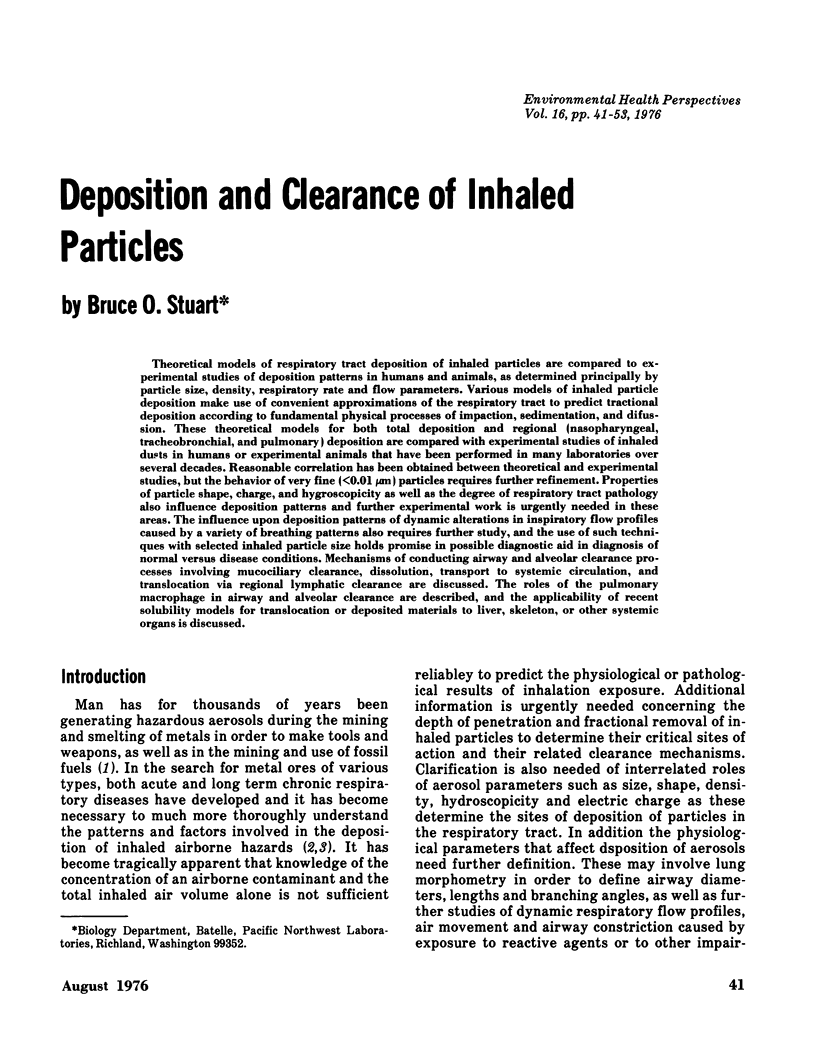
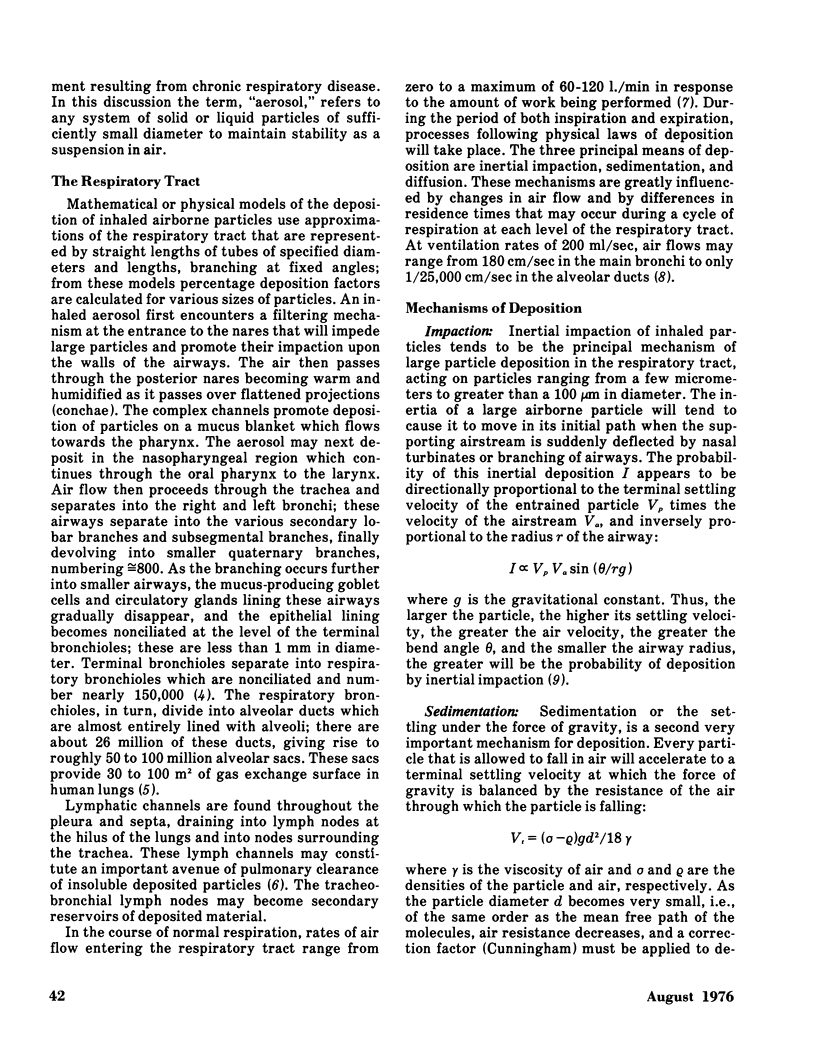

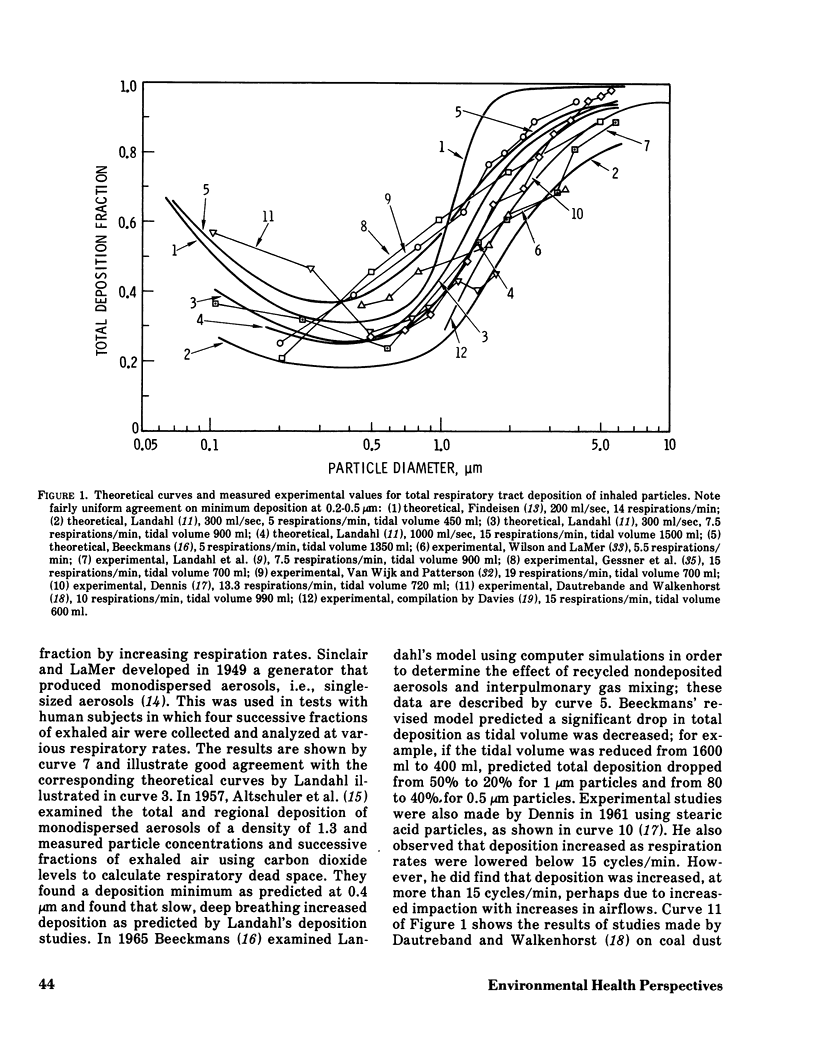


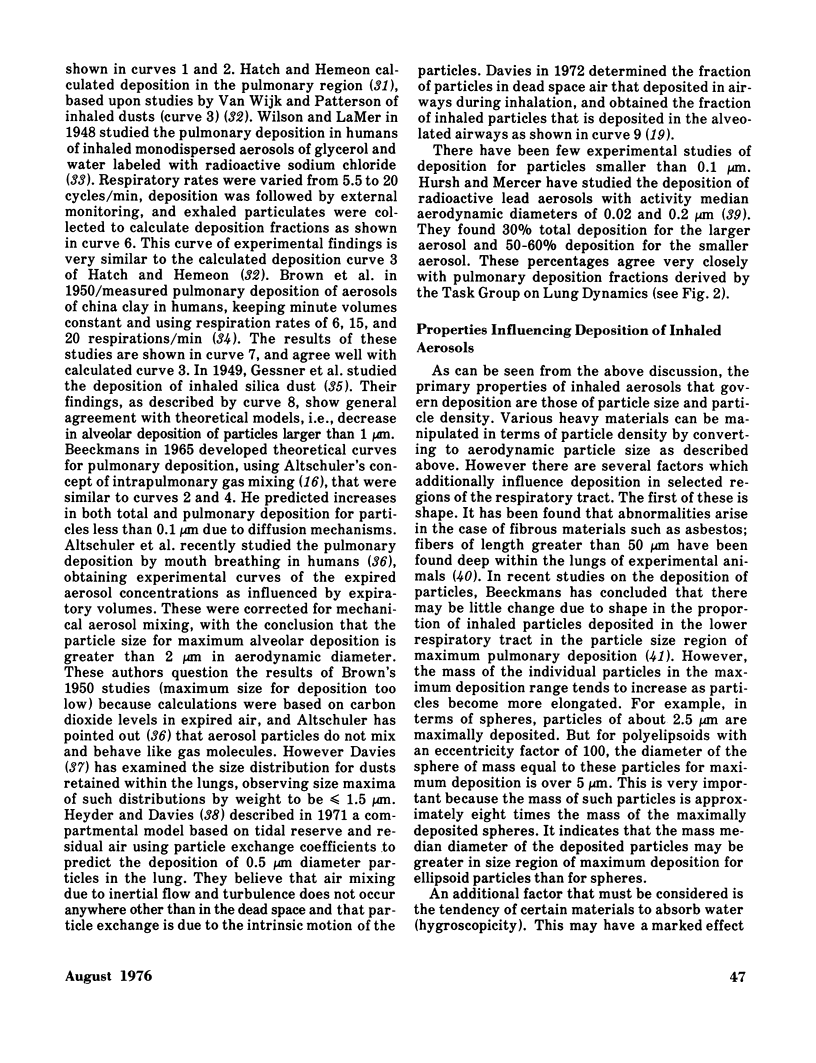
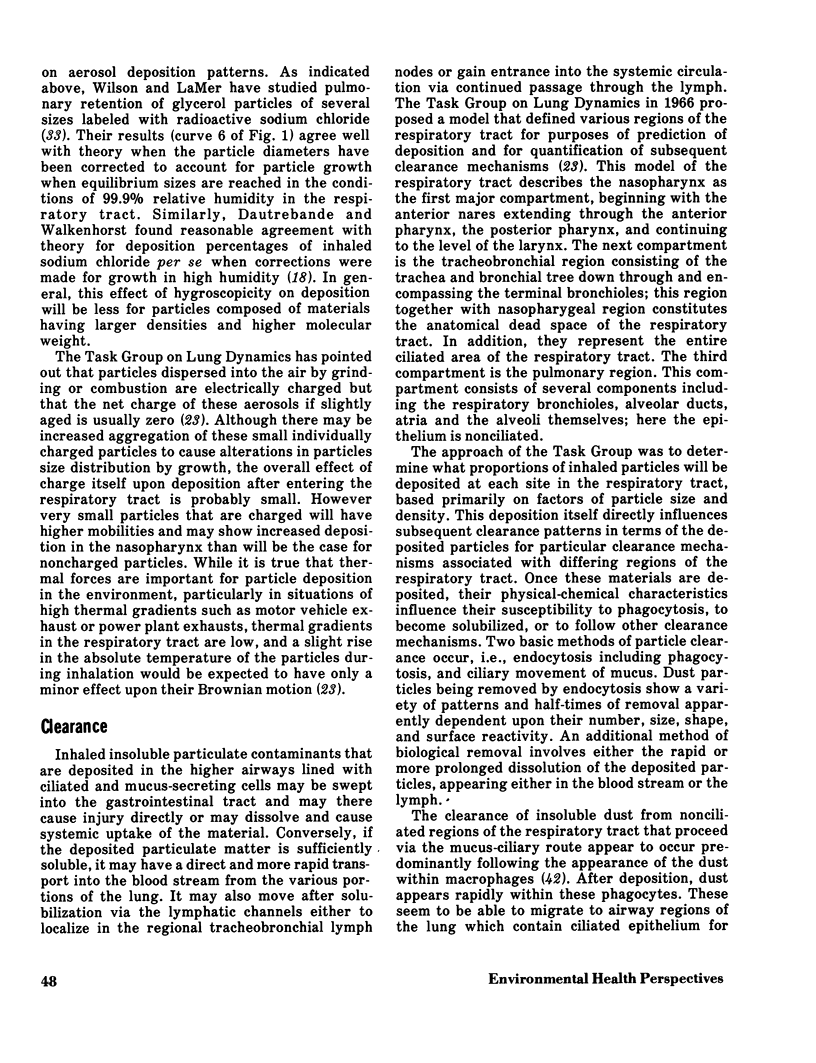
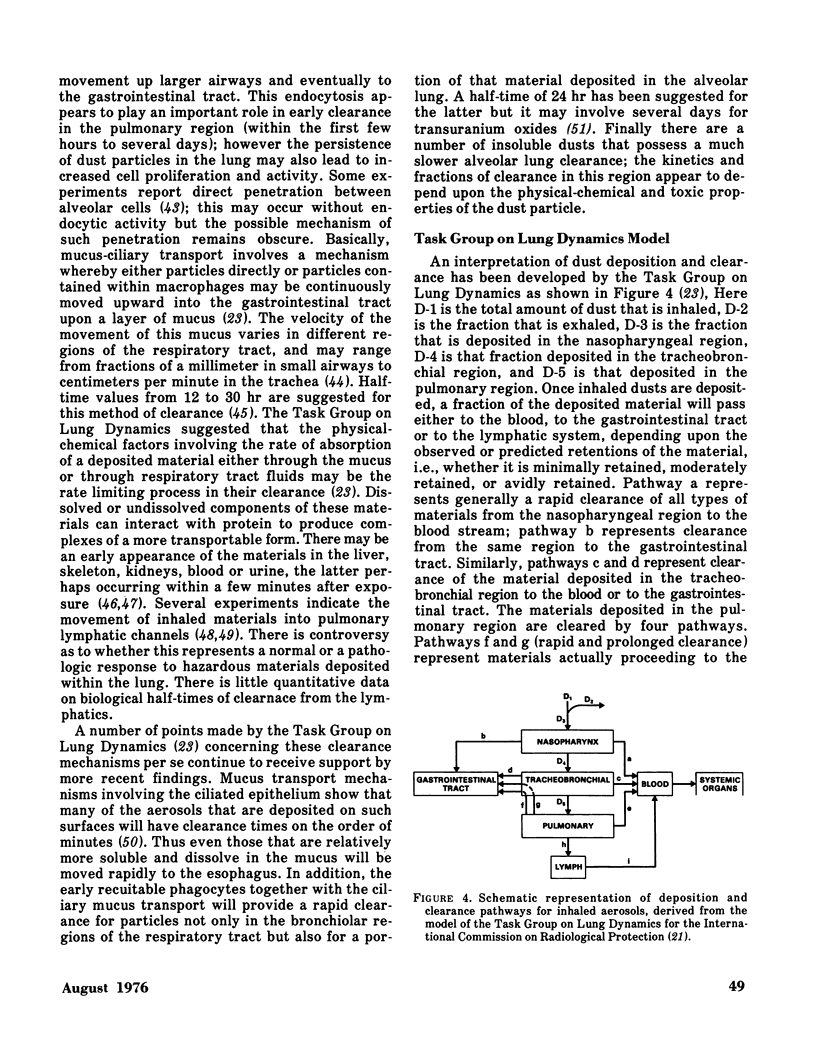
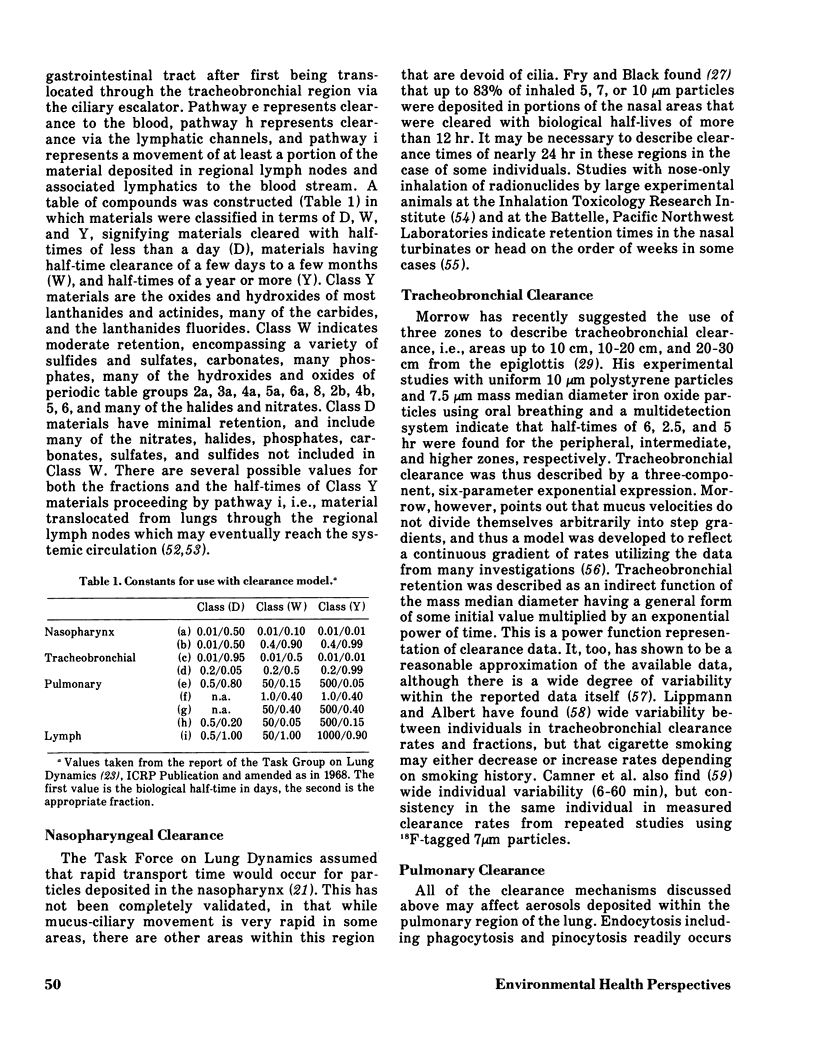
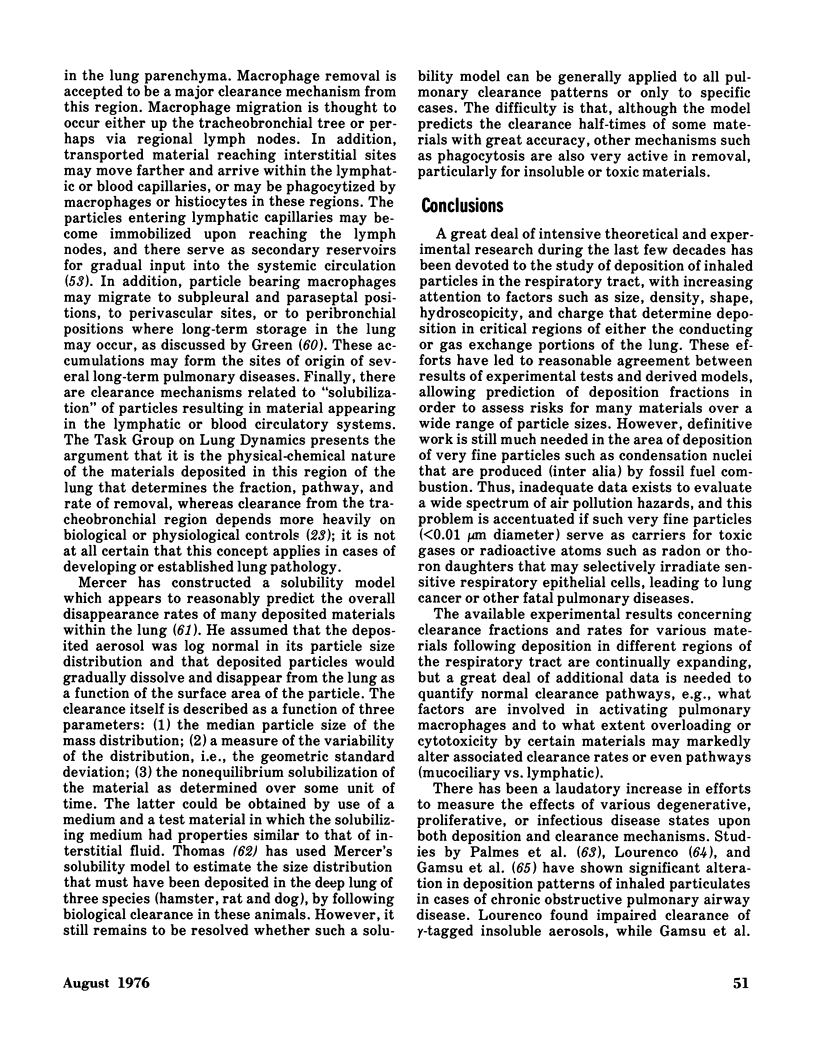
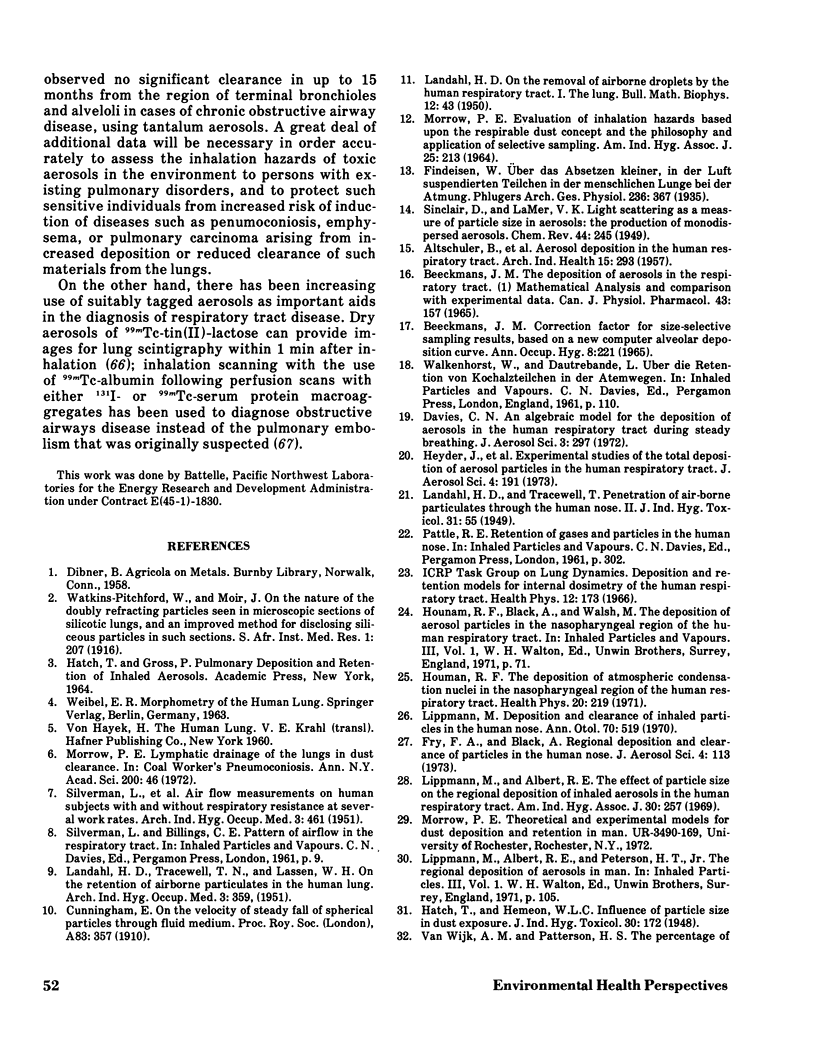
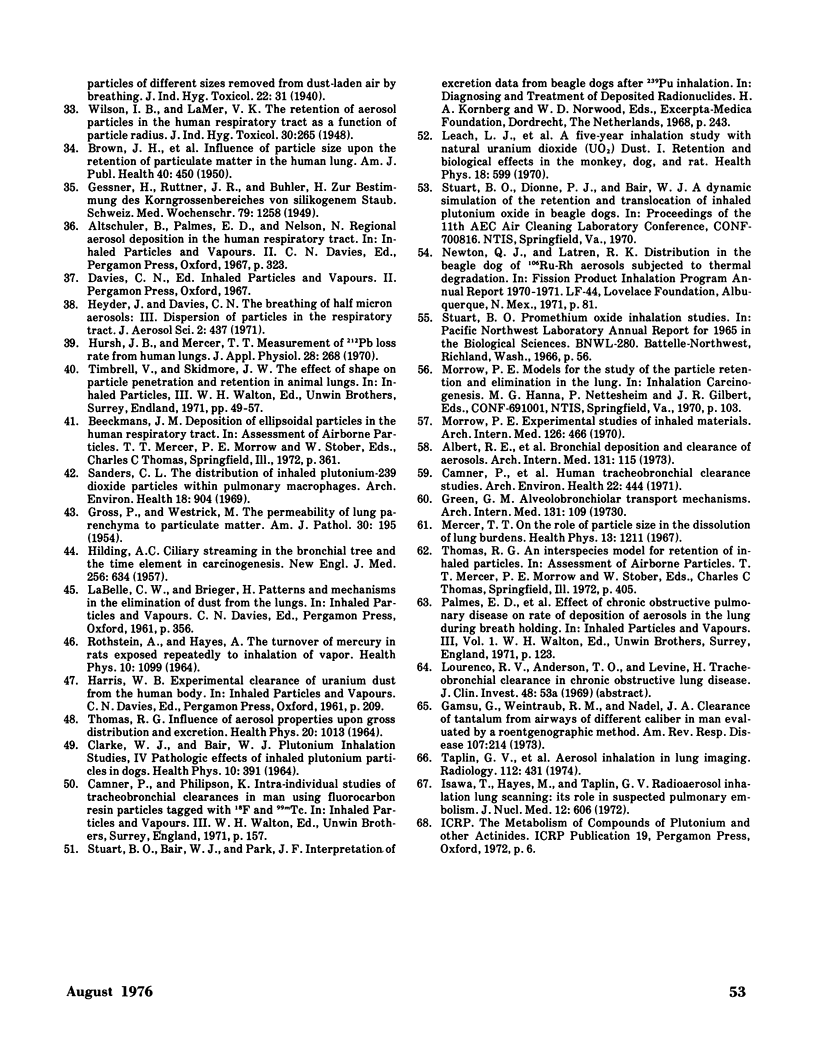
Selected References
These references are in PubMed. This may not be the complete list of references from this article.
- Albert R. E., Lippmann M., Peterson H. T., Jr, Berger J., Sanborn K., Bohning D. Bronchial deposition and clearance of aerosols. Arch Intern Med. 1973 Jan;131(1):115–127. [PubMed] [Google Scholar]
- BEECKMANS J. M. CORRECTION FACTOR FOR SIZE-SELECTIVE SAMPLING RESULTS, BASED ON A NEW COMPUTED ALVEOLAR DEPOSITION CURVE. Ann Occup Hyg. 1965 Jul;8:221–231. doi: 10.1093/annhyg/8.3.221. [DOI] [PubMed] [Google Scholar]
- BEECKMANS J. M. THE DEPOSITION OF AEROSOLS IN THE RESPIRATORY TRACT. I. MATHEMATICAL ANALYSIS AND COMPARISON WITH EXPERIMENTAL DATA. Can J Physiol Pharmacol. 1965 Jan;43:157–172. doi: 10.1139/y65-015. [DOI] [PubMed] [Google Scholar]
- Brown J. H., Cook K. M., Ney F. G., Hatch T. Influence of Particle Size upon the Retention of Particulate Matter in the Human Lung. Am J Public Health Nations Health. 1950 Apr;40(4):450–480. doi: 10.2105/ajph.40.4.450. [DOI] [PMC free article] [PubMed] [Google Scholar]
- CLARKE W. J., BAIR W. J. PLUTONIUM INHALATION STUDIES. VI. PATHOLOGIC EFFECTS OF INHALED PLUTONIUM PARTICLES IN DOGS. Health Phys. 1964 Jun;10:391–398. doi: 10.1097/00004032-196406000-00002. [DOI] [PubMed] [Google Scholar]
- Camner P., Philipson K., Friberg L., Holma B., Larsson B., Svedberg J. Human tracheobronchial clearance studies. With fluorocarbon resin particles tagged with 18F. Arch Environ Health. 1971 Apr;22(4):444–449. doi: 10.1080/00039896.1971.10665876. [DOI] [PubMed] [Google Scholar]
- GESSNER H., RUTTNER J. R., BUHLER H. Zur Bestimmung des Korngrössenbereiches von silikogenem Staub. Schweiz Med Wochenschr. 1949 Dec 31;79(52):1258–1262. [PubMed] [Google Scholar]
- GROSS P., WESTRICK M. The permeability of lung parenchyma to particulate matter. Am J Pathol. 1954 Mar-Apr;30(2):195–213. [PMC free article] [PubMed] [Google Scholar]
- Gamsu G., Weintraub R. M., Nadel J. A. Clearance of tantalum from airways of different caliber in man evaluated by a roentgenographic method. Am Rev Respir Dis. 1973 Feb;107(2):214–224. doi: 10.1164/arrd.1973.107.2.214. [DOI] [PubMed] [Google Scholar]
- HILDING A. C. Ciliary streaming in the bronchial tree and the time element in carcinogenesis. N Engl J Med. 1957 Apr 4;256(14):634–640. doi: 10.1056/NEJM195704042561403. [DOI] [PubMed] [Google Scholar]
- Hounam R. F. The deposition of atmospheric condensation nuclei in the nasopharyngeal region of the human respiratory tract. Health Phys. 1971 Feb;20(2):219–220. [PubMed] [Google Scholar]
- Hursh J. B., Mercer T. T. Measurement of 212Pb loss rate from human lungs. J Appl Physiol. 1970 Mar;28(3):268–274. doi: 10.1152/jappl.1970.28.3.268. [DOI] [PubMed] [Google Scholar]
- Isawa T., Hayes M., Taplin G. V. Radioaerosol inhalation lung scanning: its role in suspected pulmonary embolism. J Nucl Med. 1971 Sep;12(9):606–609. [PubMed] [Google Scholar]
- LANDAHL H. D., TRACEWELL T. N., LASSEN W. H. On the retention of airborne particulates in the human lung: II. AMA Arch Ind Hyg Occup Med. 1951 Apr;3(4):359–366. [PubMed] [Google Scholar]
- Leach L. J., Maynard E. A., Hodge H. C., Scott J. K., Yuile C. L., Sylvester G. E., Wilson H. B. A five-year inhalation study with natural uranium dioxide (UO 2) dust. I. Retention and biologic effect in the monkey, dog and rat. Health Phys. 1970 Jun;18(6):599–612. doi: 10.1097/00004032-197006000-00001. [DOI] [PubMed] [Google Scholar]
- Lippmann M., Albert R. E., Peterson H. T., Jr The regional deposition of inhaled aerosols in man. Inhaled Part. 1970;1:105–122. [PubMed] [Google Scholar]
- Lippmann M., Albert R. E. The effect of particle size on the regional deposition of inhaled aerosols in the human respiratory tract. Am Ind Hyg Assoc J. 1969 May-Jun;30(3):257–275. doi: 10.1080/00028896909343120. [DOI] [PubMed] [Google Scholar]
- Lippmann M. Deposition and clearance of inhaled particles in the human nose. Ann Otol Rhinol Laryngol. 1970 Jun;79(3):519–528. doi: 10.1177/000348947007900314. [DOI] [PubMed] [Google Scholar]
- MORROW P. E. EVALUATION OF INHALATION HAZARDS BASED UPON THE RESPIRABLE DUST CONCEPT AND THE PHILOSOPHY AND APPLICATION OF SELECTIVE SAMPLING. Am Ind Hyg Assoc J. 1964 May-Jun;25:213–236. doi: 10.1080/00028896409342581. [DOI] [PubMed] [Google Scholar]
- Mercer T. T. On the role of particle size in the dissolution of lung burdens. Health Phys. 1967 Nov;13(11):1211–1221. doi: 10.1097/00004032-196711000-00005. [DOI] [PubMed] [Google Scholar]
- Morrow P. E. Experimental studies of inhaled materials. A basis for respiratory models. Arch Intern Med. 1970 Sep;126(3):466–470. [PubMed] [Google Scholar]
- Morrow P. E. Lymphatic drainage of the lung in dust clearance. Ann N Y Acad Sci. 1972 Dec 29;200:46–65. doi: 10.1111/j.1749-6632.1972.tb40177.x. [DOI] [PubMed] [Google Scholar]
- Palmes E. D., Goldring R. M., Wang C., Altshuler B. Effect of chronic obstructive pulmonary disease on rate of deposition of aerosols in the lung during breath holding. Inhaled Part. 1970;1:123–130. [PubMed] [Google Scholar]
- ROTHSTEIN A., HAYES A. THE TURNOVER OF MERCURY IN RATS EXPOSED REPEATEDLY TO INHALATION OF VAPOR. Health Phys. 1964 Dec;10:1099–1113. doi: 10.1097/00004032-196412000-00031. [DOI] [PubMed] [Google Scholar]
- SILVERMAN L., LEE G., PLOTKIN T., SAWYERS L. A., YANCEY A. R. Air flow measurements on human subjects with and without respiratory resistance at several work rates. AMA Arch Ind Hyg Occup Med. 1951 May;3(5):461–478. [PubMed] [Google Scholar]
- Sanders C. L. The distribution of inhaled plutonium-239 dioxide particles within pulmonary macrophages. Arch Environ Health. 1969 Jun;18(6):904–912. doi: 10.1080/00039896.1969.10665513. [DOI] [PubMed] [Google Scholar]
- THOMAS R. G. INFLUENCE OF AEROSOL PROPERTIES UPON GROSS DISTRIBUTION AND EXCRETION. Health Phys. 1964 Dec;10:1013–1028. doi: 10.1097/00004032-196412000-00020. [DOI] [PubMed] [Google Scholar]
- Taplin G. V., Elam D., Griswold M. L., Ramanna L. Aerosol inhalation in lung imaging. Radiology. 1974 Aug;112(2):431–433. doi: 10.1148/112.2.431. [DOI] [PubMed] [Google Scholar]


